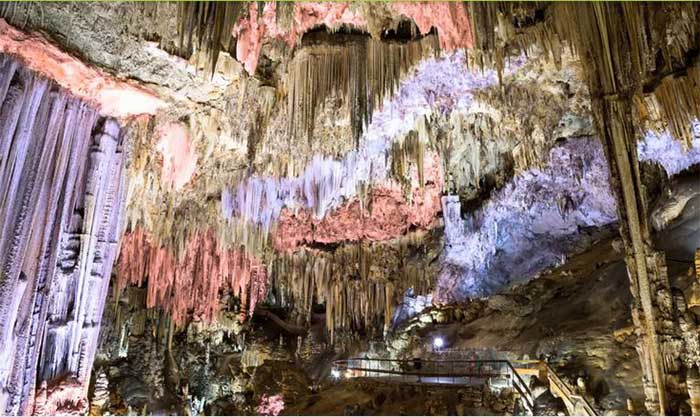A Cave in Southern Spain Has Been Continuously Visited by Humans for 41,000 Years—What Attracted Them?
Located in the province of Malaga, Nerja Cave is renowned for its Paleolithic art, left behind by generations of prehistoric inhabitants on its walls, according to IFLScience.

Nerja Cave has witnessed numerous prehistoric visits – (Photo: SHUTTERSTOCK).
The cave features a variety of sculpted drawings, ranging from simple dots and lines to more complex enlarged figures. These images reflect the cognitive abilities, culture, and technology of the different people who entered the cave.
Inside the pitch-black cave, torches and campfires were used for illumination, leaving layers of soot on the walls and remnants of charcoal on the ground.
Using carbon dating techniques, a research team recently determined the ages of these soot layers, providing a detailed history of Nerja.
The findings indicate that this site has been frequently visited by humans, more so than any other cave in Europe since prehistoric times.
In total, researchers identified 73 phases of occupation in this cave, dating from 41,218 years ago to 2,998 years ago.
Based on these discoveries, the authors concluded that Nerja Cave is a site from the Paleolithic era in Europe.
The oldest remains identified by researchers correspond to the Aurignacian industry, associated with the earliest modern humans in Europe.

Nerja Cave has been in use for 40 millennia – (Photo: SHUTTERSTOCK).
Further analysis revealed that a type of pine was used to light the cave throughout prehistoric times, indicating that this particular plant was the best fuel source at the time.
These findings at least reveal some details about why many generations of visitors created and admired art under the light of pinewood torches.
“The prehistoric paintings were viewed under the flickering light of the fire, which could give the impression that the images were moving and provided a certain warmth,” explained research author María Ángeles Medina-Alcaide from the University of Córdoba, Spain.
The study was published in the journal Scientific Reports.




















































